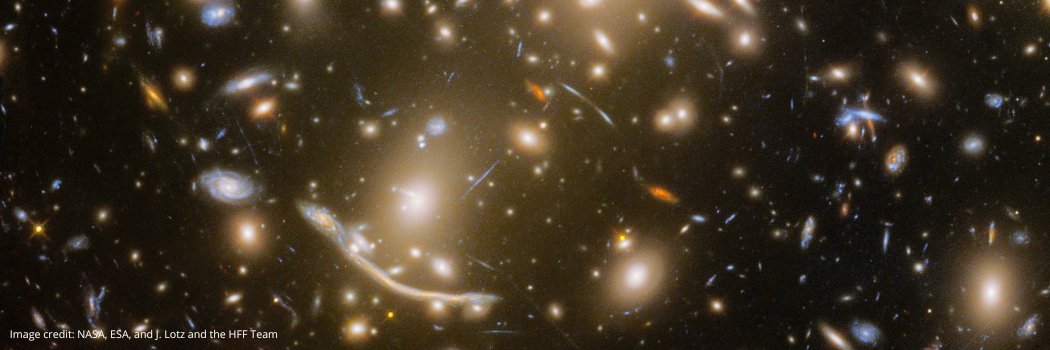
An international team of physicists, led in the UK by our Centre for Extragalactic Astronomy, has discovered over 40 previously unknown stars.
The team made the discovery when studying the distant Dragon Arc galaxy, using observations from the James Webb Space Telescope (JWST).
The Dragon Arc is located behind a massive cluster of galaxies called Abell 370. The team used a telescopic technique called gravitational lensing to study it.
Cosmic hall of mirrors
In gravitational lensing, a foreground galaxy cluster bends the light from a more distant object and magnifies it, allowing scientists to study the distant object (here the Dragon Arc galaxy).
With the gravitational lensing effect, Abell 370 stretches the Dragon Arc's signature spiral into an elongated shape — like a hall of mirrors of cosmic proportions.
Using this technique, and high-resolution JWST images taken across a full year, the team was able to identify 44 previously unknown stars in the Dragon Arc.
This is the first time so many individual stars have been discovered or observed at such a distance.
Cosmic Noon
The team knew that given the size of the 'dots' they were seeing on the images, the most logical explanation was that these were individual stars.
The images show how these stars were behaving eight billion years ago during the Middle Ages of the Universe, known as 'cosmic noon'.
Stars in the early Universe were born and behaved in a different way to today. It is roughly in the cosmic noon that these behaviors start to change.
The findings give fascinating insight into stars at this pivotal point in time and will help physicists understand how common different types of stars were in the cosmic Middle Ages.
Seeing beyond the cosmic dust
Many of the stars identified are 'red supergiants', a type of star that has typically been very difficult to identify outside of the Milky Way.
This is because they are covered in a layer of cosmic 'dust' making them almost invisible to telescopes.
The JWST enabled the team to peer through this dust more easily, revealing the hidden stars inside.
The findings show what this galaxy is made of in a way never achieved before.
They also tell us more about dark matter - a mysterious substance that binds together galaxies, creating the environment for stars, planets and life to exist.
The research team hopes to take further images of the Dragon Arc over the next few years to understand how stars formed and lived eight billion years ago.






